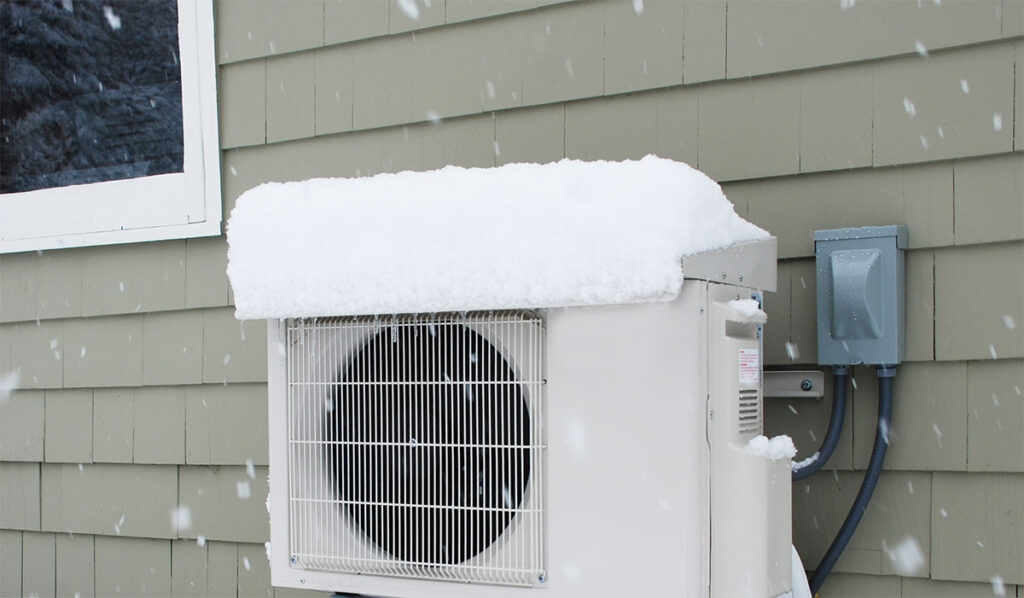Are Heat Pumps Effective During an Ontario Winter?
Yes — modern cold climate heat pumps are designed to perform reliably even during Ontario’s harshest winters. Today’s best models can operate in temperatures as low as –30°C, extracting heat from outdoor air and transferring it into your home.
While there was once skepticism about heat pumps in Canada’s climate, technology has advanced dramatically. With inverter-driven compressors, improved refrigerants, and built-in backup heating systems, heat pumps are now a practical and efficient choice for Ontario homeowners.
How Heat Pumps Provide Warmth in Cold Temperatures
It may seem impossible, but even freezing outdoor air contains usable heat. A heat pump’s refrigerant system captures that heat, compresses it, and releases it inside your home.
During the coldest nights, many systems rely on backup electric resistance heaters or can work alongside a gas furnace as part of a hybrid heating system. This ensures that your home stays warm even when temperatures drop well below –20°C.
The result: steady, comfortable heating without the excessive fuel use of traditional furnaces.

Your Comfort, Upgraded with a Smart Thermostat
The Lennox iComfort® Wi-Fi Thermostat gives you remote control, energy savings, and year-round comfort—all in one smart touchscreen.
The Advantages of Cold Climate Heat Pumps in Ontario
Homeowners across Ontario are turning to heat pumps not just for comfort, but also for long-term efficiency. A properly sized, professionally installed system brings:
- Energy Efficiency – Heat pumps transfer heat instead of generating it, meaning less energy consumption and lower monthly bills.
- Year-Round Comfort – One system provides heating in winter and cooling in summer.
- Environmental Benefits – Reduced greenhouse gas emissions compared to fossil fuel systems.
- Cost Savings – Government rebates and lower utility bills help offset higher upfront costs.
This combination makes heat pumps one of the smartest investments for Ontario homes.
Heat Pump Maintenance Tips for Winter Reliability
Like any HVAC system, heat pumps need regular care to stay efficient. Before and during winter, homeowners should:
- Replace or clean air filters every 1–3 months
- Keep the outdoor unit free of snow, ice, and leaves
- Schedule annual professional maintenance to inspect refrigerant levels, coils, and electrical components
Regular servicing ensures your system runs at peak efficiency and prevents costly breakdowns when you need heat most.
Frequently Asked Questions (FAQ)
Do heat pumps really work in –30°C temperatures?
Yes. Modern cold climate heat pumps are specifically designed for Canadian winters, with technology that allows them to extract heat from the air even in extreme cold. Some models can operate efficiently down to –30°C, though performance naturally decreases as the temperature drops. That’s why many Ontario homeowners pair their heat pump with either a backup electric resistance heater or a gas furnace in a hybrid system. This way, you always have reliable heat, even on the coldest nights.
Will I still need a furnace if I install a heat pump?
Are heat pumps expensive to run in winter?
What happens if snow builds up around the outdoor unit?
Is a heat pump right for every Ontario home?
In most cases, yes. Heat pumps work well in a wide variety of homes, whether you already have ductwork or you’re looking for a ductless solution. However, factors like insulation levels, square footage, and your current heating system can influence which model will work best. If your home is well-insulated and energy efficient, a cold climate heat pump could easily cover nearly all your heating needs. For older homes or those with drafty construction, a hybrid system that pairs a heat pump with a furnace may be the most practical solution.
A professional assessment from Climate Works can help determine the perfect fit for your home.

Considering a Heat Pump for Your Ontario Home?
If you’re looking for a system that can handle Ontario winters while lowering your energy bills, a cold climate heat pump is the answer.
At Climate Works Heating, Cooling & Plumbing, we specialize in installing and servicing the best heat pump brands for Canadian homes. From helping you choose the right unit to securing government rebates, our team is here to make the transition seamless.
Contact Us
Ottawa (Headquarters)2639 Pollock Rd.
Richmond, ON, K0A 2Z0
info@climateworks.ca | 613-838-9989
Toronto & GTA
1883 Mattawa Ave.
Mississauga, ON, L4X 1K8
gtaestimating@climateworks.ca | 437-317-0699
